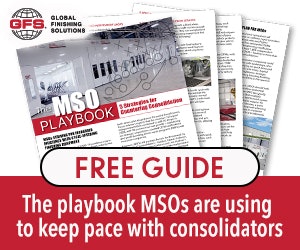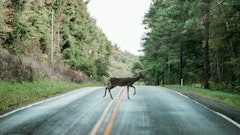
By Jeff Sanford
Toronto, Ontario — October 4, 2015 — It’s that time of year again, when rutting deer make driving on rural roads especially hazardous. The traditional October bump in business at collision repair centres caused by collisions with deer is a well-documented annual occurrence.
Deer, of course, breed from October to December so the animals are more active in this time, moving through the woods and often onto roads where they collide with vehicles. This is no small issue. According to Transport Canada, there are more than 25,000 collisions each year with large animals.
Summing up the damage in deer season is a 2013 report from CARSTAR US. The “CARSTAR Bucks and Dough Deer Damage Survey” collected some data on the October-December deer phenomenon. The survey contacted shop owners and asked a series of questions about deer collisions in the fall. The results are fascinating.
According to the survey the “frequency and severity of deer-related accidents are growing as quickly as the deer population in some markets.” It is estimated more than a million and half deer-vehicle collisions will happen this year in North America. The survey also found that 40 percent of CARSTAR owners report a 25 percent increase in deer-related accidents. Nearly12 percent report a 50 percent increase. Five percent see an amazing 75 percent increase in business over this time. A report from Canada’s Traffic Injury Research Foundation seems to bear out this general conclusion, that collisions with large wildlife are indeed on the rise.
The costs of these collisions are significant. Nearly 70 percent of the surveyed shop owners estimate that the average cost of a deer-related collision repair is between $2,500 and $4,999, while some five percent of repairs are between $5,000 and $10,000.
The most common list of damages follows:
– Replace or repair front bumper – 30 percent
– Replace or repair hood – 22 percent
– Replace or repair fender – 12 percent
– Replace headlight – 10 percent
In one-quarter of deer-related accidents, shop owners reported the vehicle repairs included the above repairs but also the replacement of a windshield, roof and side panels. Another significant bit of work involves cleaning and repairing the interior of the vehicle in cases where the deer land in the vehicle. Store owners also reported damage from deer hitting the sides of vehicles or running into the back of the car. Some examples of unique collisions reported in the survey:
– One driver hit and killed a deer, then put it in the trunk to take home. While driving home, a moose smelled the deer and charged the car while it was on the road, causing multiple dents to the rear of the vehicle, compounding the original damage on the front.
– A customer picked up a repaired vehicle after a deer-related accident, started driving home, and hit another deer 15 minutes later, within 50 yards of where they hit the first one. The customer brought back the vehicle with a complaint that the repair only lasted 15 minutes.
– An eight-point buck tried to jump over a GMC Envoy traveling at highway speeds, and crashed through the passenger side window. The antlers pinned the driver to his seat, with the buck riding shotgun until help arrived to free them. Fortunately everyone was okay, including the deer.
For information on helping your customers avoid collisions with wildlife, please visit wildliferoadsharing.tirf.org.






















